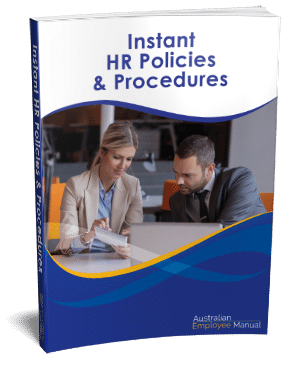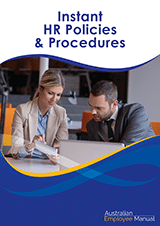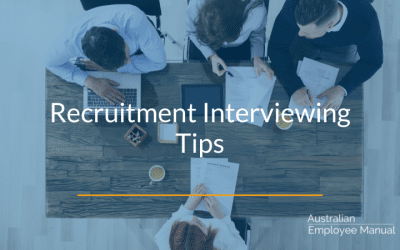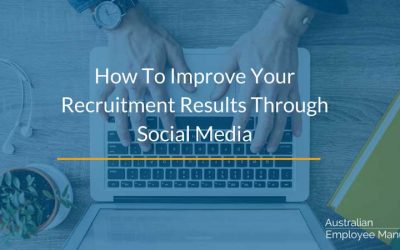Hiring your first employee can be a rewarding and challenging experience for any Australian small business owner. You want to find someone to help you grow your business, but you must also comply with various laws and regulations. To simplify the process, here are six steps you should follow before hiring your first employee.
Step 1: Decide on the type of employee you need
Just like you wouldn’t walk into a shop and buy the first computer you see on the shelf without knowing what you will do with it, you need to do the same with your potential employee.
The first step is to write down exactly what you want the person to do for you in a clear job description. The first step of creating a job description is working out what duties and tasks you would like the person to do, on what days and to what skill level.
Assess whether the person you will be hiring needs specific skills or if you are willing (and have the time) to train someone.
Consider what personality would work best with you – do you need a self-starter or someone who checks in regularly before acting?
Write it all down and then organise your job description into headings:
- Background – about your company and you.
- Position description – general information about the role and its goal. Include in here days and hours of work.
- Key duties – list out the primary duties to be performed in order of importance
- Skills, knowledge, and abilities – list the skills the person has to have to do the role. Include any specific requirements such as a current driver’s license.
- Selection criteria – this is a list of things to help you assess whether or not a candidate can do the job. Use this to help balance your heart with some logic – you may like a candidate, but if they can’t use a computer and your job is online, you should not hire them, no matter how nice they are.
Remember to also consider the employment impacts and costs of hiring an employee. These include wages, superannuation, tax, insurance, training and equipment.
Based on this analysis, you can decide on the type of employee you need, such as full-time, part-time, casual or contractor. This will affect their pay rates, entitlements, and obligations.
Full-time employees work regular hours each week and are entitled to paid leave. Part-time employees work regular hours each week but less than full-time employees. They are also entitled to paid leave on a pro-rata basis.
Casual employees work irregular hours with no guaranteed hours or pattern of work. They are not entitled to paid leave but receive a higher pay rate (casual loading) instead.
Step 2: Determine the minimum pay rate and employment conditions
As an employer, you are legally obligated to pay your employee the right amount for their work. A great place to start understanding your legal obligations when you hire employees is the Fair Work Ombudsman website.
You need to pay your employee at least the minimum wage and provide them with the minimum entitlements for their industry or occupation. This includes:
- Complying with the 11 minimum entitlements contained in the National Employment Standards,
- Paying at least the minimum wage or higher according to their award or agreement,
- Paying the correct pay rate for overtime, penalty rates or allowances contained in their award or agreement,
- Understanding and paying the appropriate leave entitlements such as annual leave, sick leave or parental leave,
- Contributing the correct superannuation contributions under the superannuation guarantee.
Use the Pay and Conditions Calculator on the Fair Work Ombudsman website to help work out the award or agreement that applies to your new employee.
You can pay above award conditions but cannot pay below these minimum entitlements.
You must comply with the pay scales and conditions outlined in the award or agreement and keep informed when these terms and conditions change. The easiest way to do that is to subscribe to the free update service to the award from the Fair Work Commission.
Step 3: Determine market rates
Now you know the minimum rates and conditions payable, you need to determine what rate you will offer a new employee. You will likely need to pay over the minimum rates in candidate-poor markets to attract quality candidates.
To attract quality candidates, you need to meet the market. One way to determine current market rates for the role is to look through online recruitment boards to get an idea of what the market is paying. For example – the minimum rate may be $25 per hour but you may find that the market is paying $35 per hour for the same role.
You can also check the Australian Bureau of Statistics (ABS) Average Weekly Earnings (AWE) data. This weekly publication estimates average weekly earnings for full-time and part-time employees in Australia by sector, industry, occupation and gender. You can use the AWE data to benchmark your pay rates against the national or industry averages.
Step 4: Comply with other legalities
PAYG Taxation
As an employer, you must meet your PAYG taxation obligations for your employees. This means you need to deduct the correct amount of PAYG taxation from their pay each pay cycle and then pay this amount to the ATO each quarter as part of your Activity Statement (or more frequently if you arrange it with the ATO).
The ATO has general information on PAYG withholding and what to do to meet your obligations.
You will need to register for a PAYG withholding account with them. You need to register before you pay someone for the first time.
You will also want to review information from the ATO on Tax File Number Declaration Forms, as your employee will need to complete one when they commence with you.
You must also report to the ATO by August 14 each year on all payments you made during the financial year and the amounts withheld from those payments and submitted to the ATO.
Here is a link to the due dates each year for PAYG.
Superannuation
The Superannuation Guarantee is the percentage of an eligible employee’s salary that employers must pay into the employee’s superannuation fund to fund their retirement.
The superannuation guarantee applies to ordinary time earnings, which are wages plus additional payments such as commissions, bonuses, or allowances.
We also recommend using the Superannuation Guarantee Eligibility Decision Tool from the ATO to determine if you need to pay the superannuation guarantee for your employees.
You can use the Superannuation Guarantee Contributions Calculator tool provided by the Australian Taxation Office (ATO) to work out the superannuation guarantee amount to pay to your employee’s super fund.
If you are required to pay superannuation, your employee will need to complete a Superannuation Standard Choice Form from the ATO.
There are several steps to setting up superannuation payments. You can find out more on the ATO Setting Up Superannuation page.
Fringe Benefits Tax
If you provide fringe benefits to your employee (e.g., allowing employees to use your car for private purposes or entertainment benefits such as theatre tickets or meals), you may be liable for FBT. Talk with your accountant to determine what you need to record and how to record it.
Workers’ Compensation
You must take out a Workers’ Compensation Insurance Policy to protect your employees if they injure themselves while working for you.
As each state has different requirements, contact WorkCover or Worksafe in your state to find out what you need to do.
Other Insurances
Check any existing insurance you hold for your property to check if they cover you and your employees for accidents and injuries within your business. In most cases, you need to ring your insurance provider to discuss the situation and review your coverage.
Areas to check:
- Motor Vehicles – If your employee drives your car and is involved in an accident, are they and you covered?
- Public Liability – Are you covered for incidents that occur in or outside your business involving your employees?
- Contents – Does your contents policy cover the personal effects of your employees inside your business?
Council Approval
Some local councils limit when a business can have employees working from a home-based business. Check with your local council to identify any rules or bylaws you need to comply with.
Step 5: Set up your systems
Employing people means paying them correctly on their due dates using a single-touch payroll (STP) compliant system.
Many people hire a bookkeeper or have their accountant run the pays for them weekly/fortnightly and help them set up clear record-keeping processes.
Other people do it themselves and use one of the many bookkeeping programs such as Xero, MYOB, or QuickBooks to help them. If you are unfamiliar with these programs, discuss your options with your bookkeeper/accountant, have them set it up for you, and train you in their use.
Next, prepare your paperwork in readiness:
- A written employment contract that outlines the terms and conditions of employment.
- A tax file number declaration form that allows you to withhold tax from their pay.
- A superannuation choice form that lets them choose their preferred super fund.
- A Fair Work Information Statement that explains their rights and obligations under the Fair Work Act 2009 and, if they are casual, a copy of the Casual Employment Information Statement.
- An induction plan that covers topics such as health and safety, policies and procedures, training, and expectations.
You also need to provide your new employee with a healthy and safe working environment. This may involve making adjustments to your workplace, such as providing equipment such as computers and phones, furniture or personal protective equipment. You should also conduct a risk assessment and implement measures to prevent or minimise hazards.
Step 6: Recruit your employee
Once you have all the essentials in place, you can start looking for candidates. You could consider advertising your job vacancy using an online Board such as Seek or Career One, using a recruitment agency, listing your job in local Facebook community groups, or asking friends, family or colleagues if they know anyone who may be suitable.
Remember, you must comply with all legal requirements of the anti-discrimination legislation and the Competition and Consumer Act with your job vacancy ads.
Step 7: Interview and hire
After receiving applications from candidates, you need to shortlist them based on their suitability for the role. You can use various tools to screen candidates, such as phone interviews, online tests, or reference checks.
You then need to conduct face-to-face interviews with the selected candidates. You should prepare a list of questions that relate to the job description and assess their skills, knowledge and personality. You should also allow them to ask you questions about the role and the business.
After conducting the interviews, you need to make a decision and offer the job to the best candidate. You should also inform the unsuccessful candidates and provide them with feedback if requested.
Hiring your first employee is a significant milestone for Australian small business owners. It can help you grow your business, increase productivity, and achieve your goals.
However, it also comes with various responsibilities and obligations that you need to be aware of and comply with.
By following these six steps before you hire your first employee, you can ensure that you find the right person for the role, prepare them for success and pay them the right amount.
Remember that hiring an employee is not a one-off event but an ongoing relationship that requires constant communication, feedback, and support. If you do it right, you can build a loyal and motivated team that will help you take your business to the next level.




